
Târgu Jiu: The Heart of Artistic Heritage
Discover Târgu Jiu, the artistic heart of Romania, where Brâncuși's masterpieces, rich history, and stunning natural landscapes create an unforgettable journey.
Târgu Jiu is a charming city located in the southern part of Romania, nestled in the picturesque region of Oltenia. Known primarily for its rich history and cultural significance, this city is a treasure trove for art enthusiasts, history buffs, and nature lovers alike. One of the most prominent features of Târgu Jiu is its connection to the renowned Romanian sculptor Constantin Brâncuși. His monumental works, including the famous Endless Column, the Table of Silence, and the Gate of the Kiss, are part of the city's outdoor museum, showcasing his legacy in a serene park setting. Beyond its artistic allure, Târgu Jiu offers a captivating blend of historical and natural attractions. The city is home to several well-preserved churches and monasteries, each narrating stories of the past through their stunning architecture and intricate frescoes. For those who love the outdoors, the nearby Jiu River provides opportunities for fishing, boating, and serene walks along its banks, while the surrounding hills and forests invite you to explore Romania's natural beauty. Târgu Jiu is also a hub of local traditions and vibrant festivals. Visitors will be charmed by the warm hospitality of the locals, the delicious traditional Romanian cuisine, and the lively markets where artisans sell handmade crafts. Whether you're wandering through the city's peaceful streets, admiring its artistic masterpieces, or immersing yourself in local culture, Târgu Jiu promises an enriching and unforgettable experience.
Local tips in Târgu Jiu
- Visit the Brâncuși sculptures early in the morning to avoid crowds and enjoy the serene park atmosphere.
- Try traditional Romanian dishes at local restaurants, such as sarmale (cabbage rolls) and mici (grilled sausages).
- Explore the local markets for unique handmade crafts and souvenirs.
- Take a walk along the Jiu River for a peaceful and scenic experience.
- Plan your visit during one of the city's festivals to experience local traditions and festivities.
Târgu Jiu: The Heart of Artistic Heritage
Târgu Jiu is a charming city located in the southern part of Romania, nestled in the picturesque region of Oltenia. Known primarily for its rich history and cultural significance, this city is a treasure trove for art enthusiasts, history buffs, and nature lovers alike. One of the most prominent features of Târgu Jiu is its connection to the renowned Romanian sculptor Constantin Brâncuși. His monumental works, including the famous Endless Column, the Table of Silence, and the Gate of the Kiss, are part of the city's outdoor museum, showcasing his legacy in a serene park setting. Beyond its artistic allure, Târgu Jiu offers a captivating blend of historical and natural attractions. The city is home to several well-preserved churches and monasteries, each narrating stories of the past through their stunning architecture and intricate frescoes. For those who love the outdoors, the nearby Jiu River provides opportunities for fishing, boating, and serene walks along its banks, while the surrounding hills and forests invite you to explore Romania's natural beauty. Târgu Jiu is also a hub of local traditions and vibrant festivals. Visitors will be charmed by the warm hospitality of the locals, the delicious traditional Romanian cuisine, and the lively markets where artisans sell handmade crafts. Whether you're wandering through the city's peaceful streets, admiring its artistic masterpieces, or immersing yourself in local culture, Târgu Jiu promises an enriching and unforgettable experience.
When is the best time to go to Târgu Jiu?
Iconic landmarks you can’t miss
The Infinite Column
Discover the majestic Infinite Column in Târgu Jiu, an iconic monument by Constantin Brancusi symbolizing sacrifice and resilience in Romania.

The Gate of the Kiss
Explore the Gate of the Kiss in Târgu Jiu, a stunning monument by Constantin Brâncuși, symbolizing love and sacrifice in Romanian heritage.

Park of the Infinite Column
Explore the Park of the Infinite Column: a serene sanctuary blending nature and the iconic sculpture by Constantin Brâncuși, honoring Romania's rich history.

The Table of Silence
Explore The Table of Silence in Târgu Jiu, a masterpiece by Constantin Brâncuși, symbolizing peace and artistic heritage amidst stunning landscapes.

Hanul Domnesc
Discover the authentic flavors of Romania at Hanul Domnesc in Târgu Jiu, where tradition meets culinary excellence in a charming setting.

Pension Casa Danielescu
Experience authentic Romanian hospitality at Pension Casa Danielescu in Târgu Jiu, your perfect base for exploring local cultural treasures.

Museum of Popular Architecture of Gorj
Discover the beauty and traditions of the Gorj region at the Museum of Popular Architecture, an open-air museum reflecting Romanian culture.

Teatrul Dramatic Elvira Godeanu
Experience the vibrant world of performing arts at Elvira Godeanu Dramatic Theatre in Târgu Jiu, where every performance tells a unique story.

Gorj County Museum Alexander Ștefulescu
Explore the rich heritage of Gorj County at the Alexander Ștefulescu Museum, where history comes alive through fascinating exhibits and artifacts.
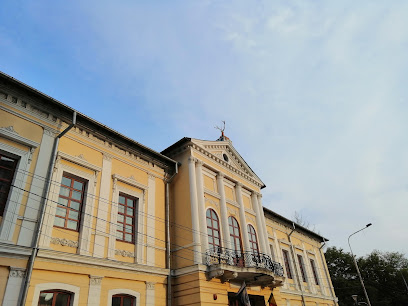
Ramada
Discover luxury and comfort at Ramada Târgu Jiu, your gateway to exploring Romania's rich culture and scenic beauty.

Casa Lipianu
Discover comfort and elegance at Casa Lipianu in Târgu Jiu, where modern amenities meet local charm for an unforgettable stay.

Ruins of Vișina monastery
Explore the serene Ruins of Vișina Monastery in Bumbești-Jiu, a captivating blend of history, architecture, and natural beauty in Romania.

Bijuteria CICI
Discover the exquisite craftsmanship of Romania at Bijuteria CICI, Târgu Jiu’s premier jewelry store, offering unique pieces for every occasion.

Fabrica De Flori
Discover the vibrant floral beauty at Fabrica De Flori, Târgu Jiu's top florist for unique arrangements and local art.

Ceasul Solar Polonez
Explore the unique blend of art and science at Ceasul Solar Polonez, a captivating museum in Târgu Jiu showcasing a remarkable solar clock and cultural heritage.

Unmissable attractions to see
The Infinite Column
Explore The Infinite Column in Târgu Jiu, a monumental tribute to Romanian heroes that beautifully blends art and history in a serene landscape.

The Gate of the Kiss
Explore the Gate of the Kiss in Târgu Jiu, Romania – a stunning monument by Constantin Brâncuși symbolizing love and cultural heritage.

The Table of Silence
Discover The Table of Silence in Târgu Jiu, a serene homage to peace and artistry by Constantin Brâncuși, set in a picturesque park.

Retezat National Park
Explore the stunning landscapes, diverse wildlife, and majestic peaks of Retezat National Park, Romania's premier destination for nature lovers.

Poiana Pelegii
Explore Poiana Pelegii, a stunning hiking area that boasts breathtaking views and serene trails for outdoor enthusiasts of all levels.

Gorj County Museum Alexander Ștefulescu
Explore the vibrant history and culture of Gorj County at Alexander Ștefulescu Museum in Târgu Jiu, a treasure trove of artifacts and local artistry.

The Art Museum
Explore the rich artistic heritage of Romania at The Art Museum in Târgu Jiu, a cultural treasure showcasing diverse art collections and exhibitions.

Sâmboteanu Fountain
Discover the enchanting Sâmboteanu Fountain, a historical landmark in Târgu Jiu, where art, nature, and history converge beautifully.

Iosif Keber memorial house
Discover the life and legacy of Iosif Keber at his memorial house in Târgu Jiu, a treasure for lovers of Romanian culture and literature.

Vechiul Pod
Discover the enchanting Vechiul Pod in Târgu Jiu, a historical landmark that beautifully blends history and nature.

Esplanada Târgu Jiu
Experience the beauty of art and nature at Esplanada Târgu Jiu, a serene tourist attraction in the heart of Romania's cultural landscape.

Delta Jiului
Discover the tranquil beauty of Delta Jiului, a picturesque escape in Târgu Jiu, perfect for nature lovers and adventure seekers.

Monumentul eroilor Vădeni
Explore the Monumentul eroilor Vădeni in Târgu Jiu, a stunning tribute to courage and sacrifice, surrounded by beautiful gardens.
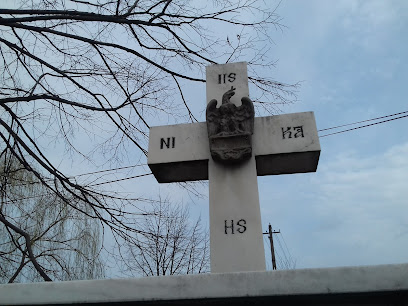
Ceasul Armoniei
Discover Ceasul Armoniei in Târgu Jiu - a stunning clock symbolizing harmony, art, and culture in the heart of Romania.
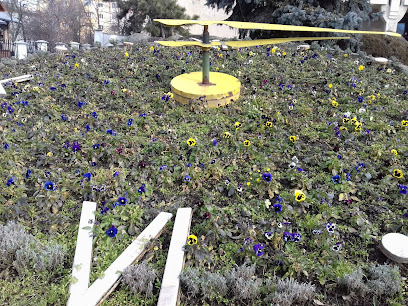
Fântână Arteziană
Explore Fântână Arteziană in Târgu Jiu, where tranquility meets exquisite artistry in the heart of Romania.
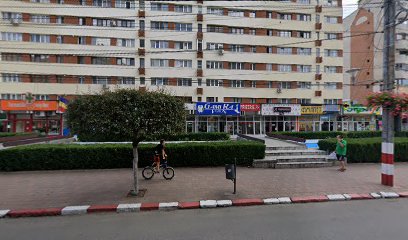
Essential places to dine
Terasa ANNA
Experience the flavors of Romania at Terasa ANNA – a perfect blend of local cuisine and international dishes in Târgu Jiu.

Restaurant Casa Vera
Experience authentic Romanian cuisine at Restaurant Casa Vera in Târgu Jiu - where tradition meets modern dining.

Super Bistro by Anna
Experience authentic Romanian cuisine at Super Bistro by Anna in Târgu Jiu - where every dish tells a story.

Hanul Domnesc
Experience the essence of Romanian cuisine at Hanul Domnesc in Târgu Jiu – where tradition meets modernity in every dish.

Madam
Discover culinary delights at Madam in Târgu Jiu - where local flavors meet international cuisine in a cozy setting.

Europa Hotel
Discover unparalleled comfort and exquisite dining at Europa Hotel in Târgu Jiu, where elegance meets local charm.

Rebecca Events
Experience authentic Romanian cuisine at Rebecca Events in Târgu Jiu – where tradition meets taste.

Aqua
Experience exquisite dining at Aqua in Târgu Jiu—where local flavors meet international cuisine in an inviting atmosphere.

Restaurant Dumbrava
Experience authentic Romanian cuisine at Restaurant Dumbrava in Târgu Jiu – where tradition meets taste.

Food Story
Discover culinary delights at Food Story in Târgu Jiu – where local flavors meet international cuisine in a cozy atmosphere.

Riviera by ANNA Events
Experience exquisite dining at Riviera by ANNA Events in Târgu Jiu – where local flavors meet international cuisine in an inviting ambiance.

Trattoria da Vittoria
Experience authentic Italian cuisine at Trattoria da Vittoria in Târgu Jiu - where every dish tells a story.

Complexul Dolce Vita Tg-Jiu
Discover Complexul Dolce Vita Tg-Jiu - A unique blend of gastronomy and leisure activities in Târgu Jiu.

Jacqueline Restaurant
Experience the rich flavors of Romania at Jacqueline Restaurant in Târgu Jiu – where every meal tells a story.

Infinit Restaurant
Experience exceptional Romanian cuisine at Infinit Restaurant in Târgu Jiu – where tradition meets modern culinary artistry.

Markets, malls and hidden boutiques
Carrefour
Discover the best of local and international products at Carrefour, Târgu Jiu's premier hypermarket, perfect for tourists and locals alike.
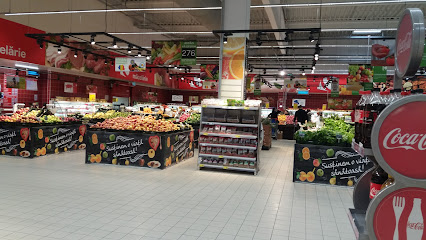
Ambasador
Experience the culinary artistry at Ambasador, a top restaurant in Târgu Jiu, where pizzas, desserts, and delightful pastries await your taste buds.

Complex Parâng
Explore Complex Parâng: A shopper's paradise in Târgu Jiu, where retail meets local culture and dining experiences.
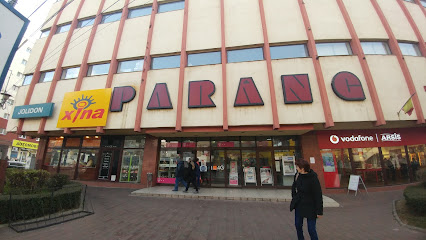
Exflor Discount
Experience Târgu Jiu's local flavors at Exflor Discount, a top supermarket for all your grocery needs during your travels.

B&B Collection
Explore B&B Collection in Târgu Jiu for exquisite jewelry and watches, showcasing the perfect blend of craftsmanship and modern design.

Darcom S.R.L.
Explore the finest stationery selection in Târgu Jiu at Darcom S.R.L., where creativity meets quality in every product.
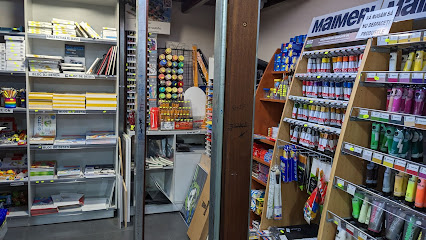
China Shop
Explore the enchanting China Shop in Târgu Jiu, where exquisite Chinese artifacts and warm hospitality await every visitor.

Altex
Discover a wide range of electronics, appliances, and more at Altex in Târgu Jiu, your one-stop destination for all tech needs.

Mondial
Explore Târgu Jiu through Mondial: Your one-stop supermarket for local flavors and essential goods.

Infinity Cafe by Rylke
Experience the perfect blend of ambiance and flavor at Infinity Cafe by Rylke in Târgu Jiu, a coffee lover's paradise.

FLANCO
Discover top-notch electronics, cameras, and accessories at FLANCO in Târgu Jiu - your one-stop shop for all tech needs.

Noriel
Explore Noriel in Târgu Jiu, a delightful toy store filled with enchanting toys and games for children and the young at heart.

POEMA Targu Jiu
Discover the latest trends in women's fashion and accessories at POEMA Targu Jiu, your stylish shopping destination in Romania.

Sadrini Style Târgu Jiu
Explore Sadrini Style Târgu Jiu for trendy dresses and quality craftsmanship, the ultimate shopping experience in Romanian fashion.

Various Brands
Discover the ultimate sporting goods store in Târgu Jiu, your go-to destination for quality gear and expert advice for all outdoor activities.

Essential bars & hidden hideouts
IRISH PUB (Colofan SRL)
Discover the heart of Târgu Jiu's nightlife at the Irish Pub, featuring a vibrant atmosphere, delicious food, and great drinks for everyone.

City Bar & Josper Grill
Discover the culinary excellence of City Bar & Josper Grill in Târgu Jiu, where every meal is a flavorful journey with fresh ingredients and a unique grilling experience.
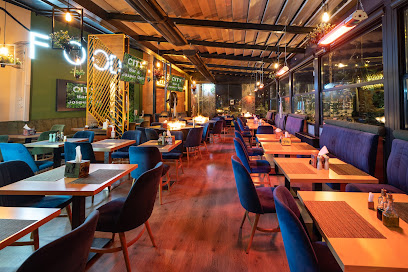
Iris Grill & Bar
Discover the vibrant flavors of Târgu Jiu at Iris Grill & Bar, where local cuisine meets a cozy atmosphere for an unforgettable dining experience.

Traby
Discover Traby, a lively bar in Târgu Jiu offering local drinks and a friendly atmosphere, perfect for unwinding after a day of exploring.

GUSTAV's PLACE
Experience the vibrant nightlife of Târgu Jiu at GUSTAV's PLACE, where delicious drinks and local culture come together in a lively pub atmosphere.

Guitar Pub
Experience the lively ambiance of Guitar Pub in Târgu Jiu, where live music meets delicious cuisine in a cozy bar setting.

Clasic Arena Sports
Discover the vibrant atmosphere at Clasic Arena Sports, Târgu Jiu's premier bar for drinks, sports, and socializing with locals.

DejaVu
Discover DejaVu, the stylish bar in Târgu Jiu that offers a vibrant atmosphere and a diverse drink selection for an unforgettable night out.

Club Piano
Experience the vibrant nightlife of Târgu Jiu at Club Piano, where expertly crafted cocktails and a lively atmosphere await.

Rodizio Pub
Discover the flavors of Romania at Rodizio Pub, where the art of dining meets vibrant ambiance in Târgu Jiu.

Forum Pub
Discover the lively ambiance and extensive drink menu at Forum Pub, an essential stop for tourists in Târgu Jiu.

Terasa bar Simdorxan Srl
Discover the vibrant atmosphere of Terasa Bar Simdorxan in Târgu Jiu, a perfect spot for drinks, snacks, and unforgettable memories.

Karma Lui Barbu
Discover the vibrant nightlife at Karma Lui Barbu, Târgu Jiu's premier bar with an inviting atmosphere and an extensive drink menu.

Winner
Discover the lively atmosphere of Winner Bar PMU in Târgu Jiu, where refreshing drinks and local culture blend seamlessly for an unforgettable experience.

Terasa Luminița
Experience authentic Romanian cuisine at Terasa Luminița, a charming grill restaurant in Târgu Jiu, where local flavors come to life.

Local Phrases
-
- HelloBună ziua
[boo-nuh zee-wah] - GoodbyeLa revedere
[lah reh-veh-deh-reh] - YesDa
[dah] - NoNu
[noo] - Please/You're welcomeTe rog
[teh rohg] - Thank youMulțumesc
[mool-tzoo-mesk] - Excuse me/SorryScuzați-mă
[skoo-zahtz-muh] - How are you?Ce faci?
[cheh fahch?] - Fine. And you?Bine. Și tu?
[bee-neh. shee too?] - Do you speak English?Vorbiți engleză?
[vor-beetz en-glez-uh?] - I don't understandNu înțeleg
[noo uhn-tzel-eg]
- HelloBună ziua
-
- I'd like to see the menu, pleaseAș dori să văd meniul, vă rog
[ush doh-ree suh vad men-yool, vuh rohg] - I don't eat meatNu mănânc carne
[noo muh-nuhnk car-neh] - Cheers!Noroc!
[noh-rohk] - I would like to pay, pleaseAș dori să plătesc, vă rog
[ush doh-ree suh pluh-tesk, vuh rohg]
- I'd like to see the menu, pleaseAș dori să văd meniul, vă rog
-
- Help!Ajutor!
[ah-zhoo-tohr] - Go away!Du-te!
[doo-teh] - Call the Police!Sunați Poliția!
[soo-nuh-tzuh poh-lee-tsee-ah] - Call a doctor!Sunați un doctor!
[soo-nuh-tzuh oon dohk-tohr] - I'm lostM-am pierdut
[mahm pyehr-dooht] - I'm illSunt bolnav
[soont bohl-nav]
- Help!Ajutor!
-
- I'd like to buy...Aș dori să cumpăr...
[ush doh-ree suh koom-par] - I'm just lookingDoar mă uit
[doh-ahr muh ooit] - How much is it?Cât costă?
[kaht kohs-tuh?] - That's too expensiveEste prea scump
[ehs-teh preh-ah skoomp] - Can you lower the price?Puteți să scădeți prețul?
[poo-tehtzuh suh skuh-dehtz prehtzool]
- I'd like to buy...Aș dori să cumpăr...
-
- What time is it?Cât este ora?
[kaht yehs-teh oh-rah] - It's one o'clockEste ora unu
[ehs-teh oh-rah oo-noo] - Half past (10)Deva pas la zece
[deh-vah pahs lah zeh-cheh] - MorningDimineața
[dee-mee-neh-tsa] - AfternoonDupă-amiază
[doo-puh ah-mee-ah-zuh] - EveningSeara
[seh-ah-rah] - YesterdayIeri
[yeh-ree] - TodayAstăzi
[ahs-tuhz] - TomorrowMâine
[muh-ee-neh] - 1unu
[oo-noo] - 2doi
[doy] - 3trei
[tray] - 4patru
[paht-roo] - 5cinci
[cheenk] - 6șase
[shah-seh] - 7șapte
[shahp-teh] - 8opt
[ohpt] - 9nouă
[noo-wuh] - 10zece
[zeh-cheh]
- What time is it?Cât este ora?
-
- Where's a/the...?Unde este unul/o...
[oon-deh yehs-teh oon-ool / oh] - What's the address?Care este adresa?
[cah-reh yehs-teh ah-dre-sah] - Can you show me (on the map)?Puteți să-mi arătați (pe hartă)?
[poo-tehtsuh suh-mee ah-rah-tzahtz (peh hahr-tuh)] - When's the next (bus)?Când este următorul (autobuz)?
[kund yehs-teh oor-muh-tor-ool (ow-toh-booze)] - A ticket (to ....)Un bilet (spre ....)
[oon bee-let (spreh)]
- Where's a/the...?Unde este unul/o...
History of Târgu Jiu
-
The history of Târgu Jiu dates back to ancient times when the region was inhabited by the Dacians, a powerful and resourceful people who lived in the Carpathian Mountains and along the Danube River. Archaeological evidence suggests that the area was a significant settlement long before the Roman conquest of Dacia in 106 AD. The Dacians left behind a rich cultural heritage that still influences the local culture today.
-
During the medieval period, Târgu Jiu emerged as an important market town. The name 'Târgu' itself means 'market' in Romanian, indicating its role as a commercial hub. The town was strategically located on trade routes that connected Transylvania with the Danube River, facilitating the exchange of goods and culture. Historical records from the 14th century highlight Târgu Jiu as a bustling center of commerce and trade.
-
One of the most significant events in Târgu Jiu's history is the Battle of Târgu Jiu, which took place during World War I in 1916. Romanian forces, under the command of General Ion Dragalina, successfully defended the town against the Central Powers. This battle was crucial in maintaining Romanian control over the region and is commemorated by several monuments, including the Heroes' Cross on top of the Parâng Mountains.
-
Târgu Jiu is internationally renowned for its association with the famed Romanian sculptor Constantin Brâncuși. Born in the nearby village of Hobița, Brâncuși created the Sculptural Ensemble of Constantin Brâncuși at Târgu Jiu, which includes three monumental works: 'The Endless Column,' 'The Gate of the Kiss,' and 'The Table of Silence.' These sculptures, completed in 1938, are considered masterpieces of modern art and symbolize the sacrifice of Romanian soldiers in World War I.
-
The communist era brought significant changes to Târgu Jiu, transforming it from a market town into an industrial center. During Nicolae Ceaușescu's regime, various factories and industrial complexes were established, leading to rapid urbanization and population growth. The town's infrastructure was modernized, and many historical buildings were lost to new construction. Despite the challenges, Târgu Jiu managed to preserve its cultural heritage and continued to be a vibrant community.
-
Since the fall of communism in 1989, Târgu Jiu has undergone a period of revival and transformation. Efforts have been made to restore and preserve historical sites, and the town has embraced its cultural heritage. The Sculptural Ensemble of Constantin Brâncuși has been recognized as a site of national and international importance, attracting tourists from around the world. Today, Târgu Jiu is a blend of historical charm and modern development, offering a rich cultural experience to visitors.
Târgu Jiu Essentials
-
Târgu Jiu is located in Gorj County, Romania. The nearest international airport is Henri Coandă International Airport in Bucharest, approximately 300 kilometers away. From Bucharest, you can take a train or a bus to Târgu Jiu, with the journey typically taking around 4 to 5 hours. Alternatively, you can rent a car and drive, which offers the flexibility to explore the scenic routes of Romania.
-
Târgu Jiu has a well-connected local transportation system. Buses and taxis are readily available and relatively inexpensive. For those who prefer more flexibility, car rentals are available and can be a convenient option for exploring the surrounding areas. Bicycle rentals are also available for those who wish to explore the city in an eco-friendly manner. The city is pedestrian-friendly with many attractions within walking distance.
-
The official currency in Romania is the Romanian Leu (RON). Credit cards are widely accepted in hotels, restaurants, and shops in Târgu Jiu. However, it is advisable to carry some cash, especially when visiting smaller establishments or rural areas. ATMs are available throughout the city, and currency exchange offices can be found in the city center.
-
Târgu Jiu is generally a safe destination for tourists. However, it is advisable to take standard precautions. Avoid walking alone at night in unfamiliar areas and keep an eye on your belongings in crowded places. While there are no specific high-crime areas targeting tourists, it's always best to stay vigilant and aware of your surroundings.
-
In case of emergency, dial 112 for immediate assistance. The local police station and medical facilities are available in Târgu Jiu. It is recommended to have travel insurance that covers medical emergencies. Pharmacies are available in the city where you can purchase over-the-counter medications for minor health issues.
-
Fashion: Do dress modestly, especially when visiting religious sites. Avoid wearing revealing clothing. Religion: Do respect local customs and traditions. Always cover your head when entering churches and monasteries. Public Transport: Do be respectful and give up your seat to elderly passengers. Don’t eat or drink on public transport. Greetings: Do greet people with a handshake. A slight bow of the head is also a sign of respect. Eating & Drinking: Do try local delicacies and accept food offerings graciously. Don’t refuse hospitality, as it is considered impolite.
-
To experience Târgu Jiu like a local, visit the local markets where you can buy fresh produce and traditional Romanian goods. Engage with locals, as they are often friendly and willing to share stories about the town's history and culture. Don’t miss visiting the Brâncuși Sculptural Ensemble, which is a key attraction in the city. For a unique experience, take a stroll along the Jiu River and explore the local parks and gardens.
Trending Landmark in Târgu Jiu
-
The Infinite Column
-
The Gate of the Kiss
-
Park of the Infinite Column
-
The Table of Silence
-
Hanul Domnesc
-
Pension Casa Danielescu
-
Museum of Popular Architecture of Gorj
-
Teatrul Dramatic Elvira Godeanu
-
Gorj County Museum Alexander Ștefulescu
-
Ramada
-
Casa Lipianu
-
Ruins of Vișina monastery
-
Bijuteria CICI
-
Fabrica De Flori
-
Ceasul Solar Polonez
Nearby Cities to Târgu Jiu
-
Things To Do in Drobeta-Turnu Severin
-
Things To Do in Râmnicu Vâlcea
-
Things To Do in Craiova
-
Things To Do in Deva
-
Things To Do in Pitesti
-
Things To Do in Sighisoara
-
Things To Do in Smederevo
-
Things To Do in Brasov
-
Things To Do in Cluj-Napoca
-
Things To Do in Arad
-
Things To Do in Pančevo
-
Things To Do in Pleven
-
Things To Do in Kragujevac
-
Things To Do in Niš
-
Things To Do in Belgrade








